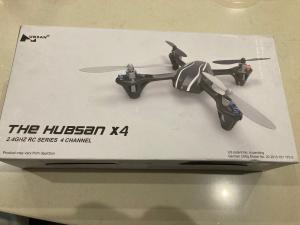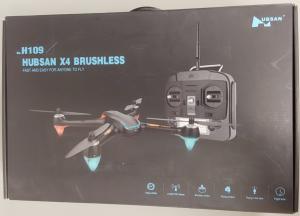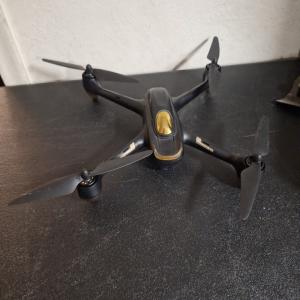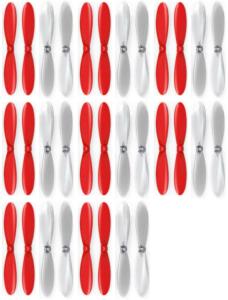Why beginners like Hubsan?
Hubsan (Shenzhen Hubsan Technology Co., Ltd.), founded in 2010, has built a reputation for making approachable RC drone systems that emphasize stability, simple setup, and clear step-by-step piloting.
Entry models in the long-running X4 family helped popularize features such as headless mode, one-button takeoff/landing, and beginner-friendly gyroscope/accelerometer stabilization—so new pilots can focus on learning lines and camera framing, not fighting the sticks.
The model families (what to expect)
- X4 & Desire series (H502-class): Small, confidence-boosting quads designed for practice and first flights. Typical highlights include altitude hold, headless orientation, GPS with return-to-home, and an onboard HD video camera for simple video recording and live video (basic first person view). Great for backyard flying and learning stick control.
- H501S X4 Air: A beloved step-up trainer that introduced many hobbyists to brushless motors, 5.8 GHz FPV with a built-in LCD transmitter, Follow-Me, RTH, and 1080p capture. Expect solid flight time (around 20 minutes), reliable GPS lock, and a durable airframe that forgives beginner crashes better than you’d expect.
- Zino & Zino 2/Pro/Plus: Foldable “travel” drones that add a 3-axis gimbal (or axis gimbal stabilization), higher-bitrate 4K video, and longer flight times for more cinematic aerial imaging. Designed for easy packing in a backpack, they bring you closer to “flying camera” results while staying approachable for the hobbyist.
- Zino Mini Pro (≈249 g): Sub-250 g portability with 4K/30, high-res stills, advertised obstacle sensing, long flight time, and advanced tracking—appealing for travelers who want a light airframe that still delivers sharp video quality.
Good to know: Across GPS-equipped Hubsan models you’ll commonly see Return-to-Home, basic autopilot assists, and support for multiple satellite constellations (GPS/Galileo/GLONASS) to strengthen positioning — handy when you’re still learning to fly.
What it’s like to fly a Hubsan (beginner checklist)
- Out of the box RTF: Most kits are RTF/ready to fly with a matched remote controller/transmitter, flight battery and charger/charging cable—pop in a formatted micro SD/microSD card for video recording, run a quick firmware check, and you’re airborne.
- Stability & control: Expect predictable hovering, responsive throttle, and electronic stabilization (via gyroscope/accelerometer) that smooths out inputs as you practice.
- Cameras & storage: From 1080p HD video to 4K video, Hubsan aims for balanced image quality without overwhelming settings. Bring an extra SD card and a spare lithium polymer (Li-Po) flight battery to extend sessions.
- Care tips: Avoid dusty props; check prop/props and rotors before each session; let lipo batteries cool before charging; and keep an eye on telemetry (battery and GPS) on the transmitter/remote control screen.
A short story of the Hubsan brand
- Early 2010s: Mini quadcopters (the original X4) make “micro” flying mainstream for newcomers.
- Mid-2010s: H501S arrives, bringing brushless power, integrated FPV LCD on the transmitter, and dependable auto return—a fan favorite for practice and park flying.
- 2018–2020: Zino/Zino Pro/Zino 2 introduce folding arms, 3-axis gimbal stabilization, and higher-bitrate 4K capture—compact “flying camera” kits you can toss in a bag.
- 2021+: Zino Mini Pro pushes sub-250 g portability with advanced features like AI tracking and obstacle sensing, signaling a trend toward lighter, smarter, more autonomous flight in the entry segment.
Hubsan in a nutshell
New pilots often ask about flight controller setup, stabilized gimbal footage, and safe take off habits. With Hubsan’s beginner focus, you’ll typically find a straightforward control system, intuitive remote control, and sensible defaults for altitude and positioning.
Many kits include RTF radios with built-in screens for first person view (FPV) and telemetry, plus chargers/battery chargers for rechargeable lithium/Li-Po packs. If you plan to record video and stills, bring a reliable micro sd card/microsd card and consider packing a lightweight backpack so your mini drone is always ready.
Practice gentle maneuver inputs, keep landing gear clear, and inspect props after a hard landing to avoid vibration. As you progress, brush up on how to fly line-of-sight first, then try simple FPV passes; explore waypoint and Follow Me modes where available; and remember that even autopilot aids can’t prevent all crashes—situational awareness is key in shared airspace.
Looking for simple fun? Some Hubsan trainers support playful flips and stunts while still teaching core stick skills. When you’re ready for more cinematic work, step into a gimbal-equipped Zino to unlock smoother aerial video and sharper 1080p HD/4K captures.
Notes on compatibility & accessories (for beginners)
You’ll see pilots mount small action cameras on older frames, carry spare lithium polymer packs for longer flight times, and travel with compact chargers and a charging cable. Always format your SD card in-drone, keep firmware current, and use balanced props to minimize vibration. If you’re experimenting with first person video streaming, a clean downlink and properly oriented antenna on the remote controller help maintain a stable feed.




